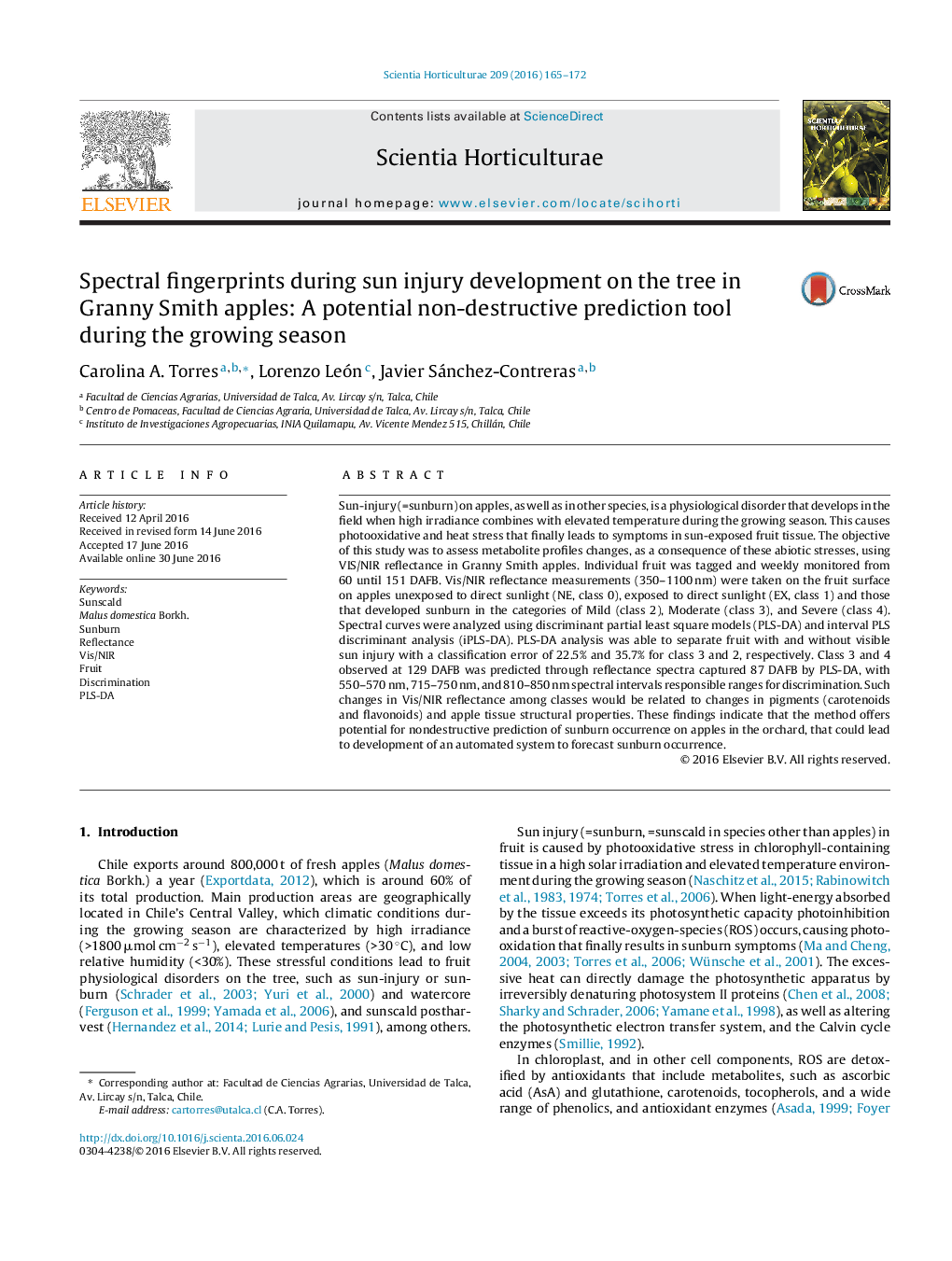| Article ID | Journal | Published Year | Pages | File Type |
|---|---|---|---|---|
| 4565965 | Scientia Horticulturae | 2016 | 8 Pages |
•Sun injury on apples can be predicted using spectral fingerprinting.•Diffuse reflectance from different sun injury categories can be discriminated using PLS-DA.•Moderate and severe sunburn categories at harvest can be predicted 87 days after full bloom.•The spectral ranges 550–570 nm, 715–750 nm, and 810–850 nm were responsible for prediction.
Sun-injury (=sunburn) on apples, as well as in other species, is a physiological disorder that develops in the field when high irradiance combines with elevated temperature during the growing season. This causes photooxidative and heat stress that finally leads to symptoms in sun-exposed fruit tissue. The objective of this study was to assess metabolite profiles changes, as a consequence of these abiotic stresses, using VIS/NIR reflectance in Granny Smith apples. Individual fruit was tagged and weekly monitored from 60 until 151 DAFB. Vis/NIR reflectance measurements (350–1100 nm) were taken on the fruit surface on apples unexposed to direct sunlight (NE, class 0), exposed to direct sunlight (EX, class 1) and those that developed sunburn in the categories of Mild (class 2), Moderate (class 3), and Severe (class 4). Spectral curves were analyzed using discriminant partial least square models (PLS-DA) and interval PLS discriminant analysis (iPLS-DA). PLS-DA analysis was able to separate fruit with and without visible sun injury with a classification error of 22.5% and 35.7% for class 3 and 2, respectively. Class 3 and 4 observed at 129 DAFB was predicted through reflectance spectra captured 87 DAFB by PLS-DA, with 550–570 nm, 715–750 nm, and 810–850 nm spectral intervals responsible ranges for discrimination. Such changes in Vis/NIR reflectance among classes would be related to changes in pigments (carotenoids and flavonoids) and apple tissue structural properties. These findings indicate that the method offers potential for nondestructive prediction of sunburn occurrence on apples in the orchard, that could lead to development of an automated system to forecast sunburn occurrence.
Graphical abstractFigure optionsDownload full-size imageDownload as PowerPoint slide
